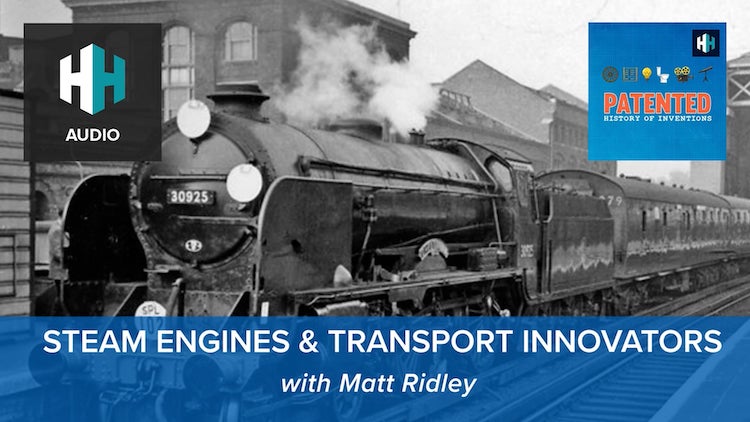The Industrial Revolution was a period of profound change between c.1750 and 1850, in which new inventions and manufacturing processes transformed the economy and wider society.
The Industrial Revolution began in Britain with the mechanisation of the textile industry, but would eventually transform almost every aspect of life from transport to agriculture. It changed where people lived, how they worked and what they bought.
In short, the Industrial Revolution created the modern world.
New inventions
At the heart of the Industrial Revolution were new inventions that fundamentally transformed the British economy.
One of these crucial inventions was the steam engine, introduced by Thomas Newcomen in 1712 to drain flooded coal-mines. Scottish inventor James Watt developed the design, devising an engine that would power industries hitherto dependent on wind and water for energy.

The Watt steam engine. Image Credit: Nicolás Pérez / Commons.
The textile industry was the first to experience the explosion of growth associated with the Industrial Revolution. Production was moved into factories and the mechanisation of cotton spinning increased the output of a worker by 500%. Britain became a major player in the world textile trade.
After that, new inventions reshaped many major industries. The invention of coke smelting revolutionised iron production; the production of new chemicals revolutionised textile bleaching; the new railway and canal network revolutionised how people travelled; and new tools like the milling machine revolutionised metalworking.
The economy transformed
Like every pre-modern economy before it, most of the people in Britain in 1600 worked in agriculture. One vital harbinger of the Industrial Revolution was the increase in agricultural productivity: between 1600 and 1800 it doubled in England.
This freed up people to work in other sectors, and as a result more and more people ended up working in industry.
 Listen Now
Listen NowThe fuel that powered the Industrial Revolution was coal. The steam engine drained mines and enabled far more coal to be extracted, which in turn powered more engines.
When industries integrated new inventions and coal power into their manufacturing processes, economic growth skyrocketed.

Coalbrookdale by Night – Philip James de Loutherbourg.
Society transformed
Away from the factories, society transformed as well. The pace of population growth reached levels not matched in all of history before or afterwards. 6 million people lived in England and Wales in 1700. By 1801 it had doubled, and then again by 1850 at which point the population was 16.8 million people.
This vastly larger population flooded into cities from the countryside. Between 1600 and 1800, the urban population in England increased from 8 to 28% of the population, whereas France’s urban population increased from 9 to 11% during the same period.
London flourished, but many cities in the north of England like Manchester, Liverpool, Birmingham, Leeds and Sheffield were the ones to benefit most from the Industrial Revolution. Glasgow also enjoyed a meteoric rise to become known as the “Second City of the Empire”.
They all grew from modest towns into imperious industrial cities.

Manchester during the Industrial Revolution – painted by William Wyld.
A new middle class flourished and the working class found employment in industry. However, working conditions were abysmal. Factory employees worked long hours and got paid very little. Child labour was common.
Society changed drastically during the Industrial Revolution. Cities sprawled out in every direction and factories rose up out of them. Britain looked a very different country in 1750 than it did in 1850.
 Watch Now
Watch NowWhy Britain?
This question is the subject of a great deal of historical debate. Hundreds of different factors have been suggested from the existence of secure property rights, to a culture of scientific discovery, to flourishing foreign trade.
While these are all probably true to some extent, they were also present in many other countries like France, the Dutch Republic and China.
It seems that cheap and abundant coal supplies and high wages might be what set Great Britain apart. They invented so many new machines because it was profitable to do so, while it may not have been so worthwhile in other places.
 Listen Now
Listen NowThe Industrial Revolution spread out from Britain in the later 19th century to continental Europe, America and Japan. Technology developed in the British Isles made its way across the Channel and the Atlantic, and transformed the lives of people across the world.















